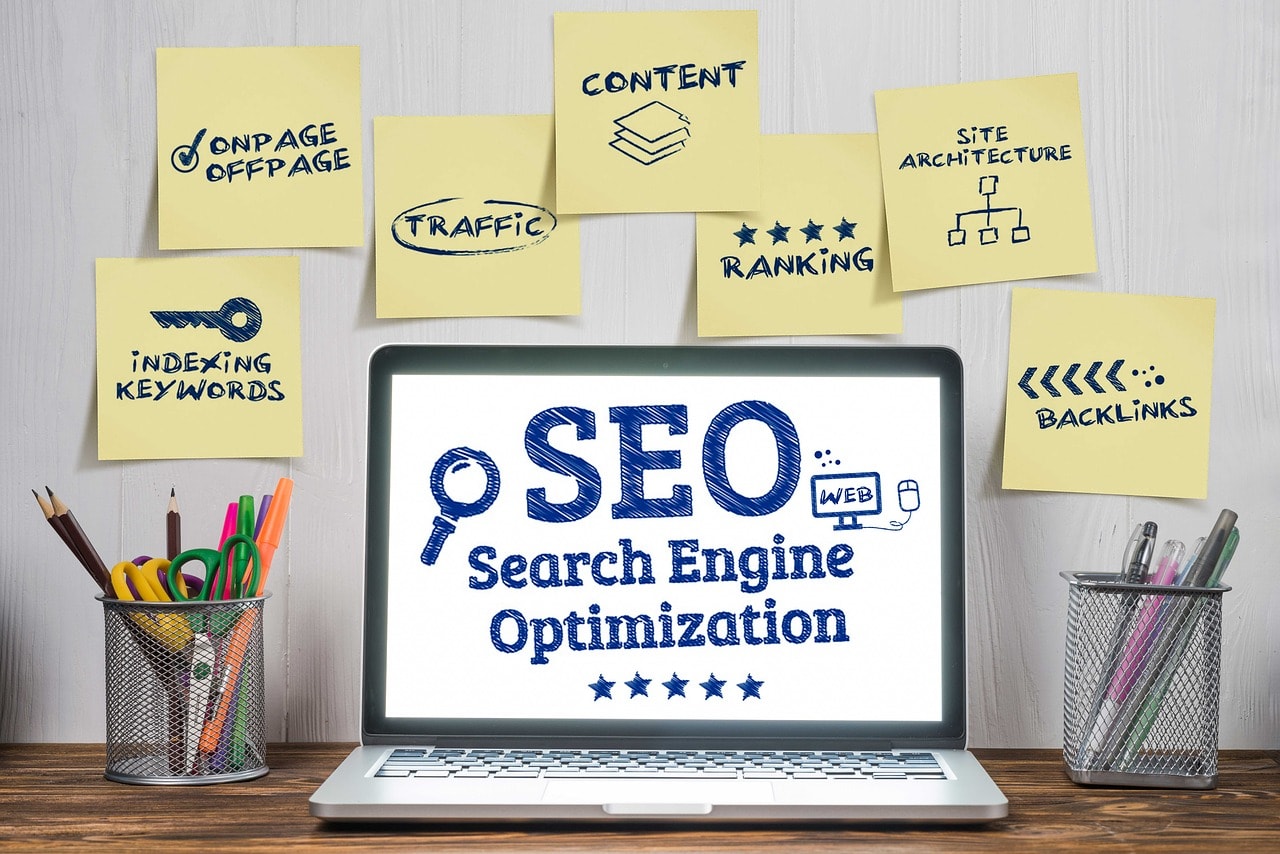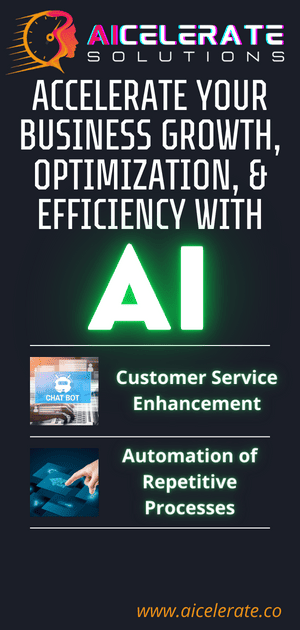If you’re a business owner, you probably know how important it is to have a website that attracts and engages your target audience. But having a website is not enough – you also need to make sure that it ranks well on Google and other search engines so that potential customers can find you easily.
But how do you rank higher on Google and drive more traffic to your site? That’s exactly what this SEO 101 guide will teach you. In this guide, we’ll explain the basics of SEO, how search engines work, and how you can optimize your website for both on-site and off-site factors. We’ll also share some practical tips and best practices that you can apply right away to improve your SEO performance.
SEO (search engine optimization) is the process of improving your website’s visibility and relevance for search queries related to your products or services. SEO can help you drive more organic (non-paid) traffic to your site, increase your brand awareness, and grow your sales.
But SEO is not a one-time thing – it’s an ongoing process that requires constant monitoring, testing, and tweaking. SEO can also be complex and confusing, especially for beginners who may not know where to start or what to focus on.
Ready to learn SEO? Let’s dive in!
What is SEO and why is it important?
SEO stands for search engine optimization. It’s the practice of increasing both the quality and quantity of website traffic, as well as exposure to your brand, through non-paid (also known as “organic”) search engine results.
SEO is important because it helps you reach your target audience at the right time and place. When people are looking for solutions online, they use search engines like Google or Bing to find answers. If your website shows up on the first page of the search results, you have a higher chance of getting clicks, leads, and conversions.
SEO also helps you build trust and credibility with your audience. By providing valuable and relevant content that matches their intent, you can show them that you’re an expert in your field and that you can solve their problems.
SEO is also cost-effective and measurable. Unlike paid advertising, you don’t have to pay for every click or impression. You can also track and analyze your SEO performance using various tools and metrics, such as traffic, rankings, bounce rate, conversion rate, etc.
How do search engines work?
Search engines are answer machines. They scour billions of pieces of content and evaluate thousands of factors to determine which content is most likely to answer your query.
Search engines do all of this by discovering and cataloguing all available content on the Internet (web pages, PDFs, images, videos, etc.) via a process known as “crawling and indexing,” and then ordering it by how well it matches the query in a process we refer to as “ranking.”
Crawling
Crawling is the process of discovering new and updated content on the web. Search engines use automated programs called crawlers or spiders to scan the web and follow links from one page to another.
Crawlers can access any publicly available web page that allows them to do so. However, some web pages may be blocked from crawling by using a file called robots.txt or by using meta tags that instruct crawlers not to index them.
Crawlers also need to be efficient and polite. They have to respect the crawl budget, which is the amount of time and resources allocated by a website owner for crawling their site. They also have to avoid crawling duplicate or low-quality content that may waste their time or harm their reputation.
Indexing
Indexing is the process of storing and organizing the content found during crawling. Search engines use a huge database called index to store all the information they collect from the web pages they crawl.
The index contains various data about each web page, such as its title, URL, content, keywords, images, links, etc. The index also updates frequently to reflect any changes or updates made on the web pages.
The index is like a library that contains all the books (web pages) that the search engine knows about. When a user types a query into the search box, the search engine looks up the index to find the most relevant books (web pages) for that query.
Ranking
Ranking is the process of ordering the web pages in the index according to their relevance and authority for a given query. Search engines use complex algorithms and mathematical formulas called ranking factors to evaluate and compare each web page in the index.
Ranking factors are signals that indicate how well a web page matches a query, how useful it is for the user, and how trustworthy it is as a source of information. Some examples of ranking factors are keywords, content quality, site speed, mobile-friendliness, backlinks, user behavior, etc.
Ranking factors are constantly changing and evolving, as search engines try to provide the best possible results for their users. Search engines also use machine learning and artificial intelligence to understand the user’s intent and context behind each query, and to personalize the results based on the user’s location, device, history, preferences, etc.
How to optimize your website for SEO?
SEO can be divided into two broad categories: on-site SEO and off-site SEO. On-site SEO refers to the optimization of your own website and its content, while off-site SEO refers to the optimization of external factors that affect your website’s reputation and authority.
On-site SEO
On-site SEO is the process of making your website and its content more relevant, user-friendly, and accessible for search engines and users. On-site SEO involves optimizing various elements of your website, such as:
- Site structure: how your website is organized and navigated
- URL structure: how your web pages are named and linked
- Title tags: how your web pages are titled
- Meta tags: how your web pages are described
- Headings: how your web pages are structured
- Content: how your web pages are written and formatted
- Images: how your web pages are illustrated
- Keywords: how your web pages are targeted for specific queries
- Site speed: how fast your web pages load
- Mobile-friendliness: how well your web pages adapt to different devices
- Internal links: how your web pages are connected to each other
- Schema markup: how your web pages are annotated for search engines
Here are some tips and best practices for on-site SEO:
- Conduct keyword research to find out what your target audience is searching for and what their intent is. Use tools like Google Keyword Planner, Moz Keyword Explorer, or SEMrush Keyword Magic Tool to generate keyword ideas and analyze their metrics, such as search volume, difficulty, competition, etc.
- Optimize your title tags for each web page using your focus keyword, a power word, and a number. For example, “SEO 101: 7 Tips on How to Rank Higher on Google and Drive More Traffic to Your Site”. Use tools like CoSchedule Headline Analyzer or Sharethrough Headline Analyzer to check the effectiveness score of your title tags.
- Optimize your meta tags for each web page using a concise and compelling description that includes your focus keyword and a call to action. For example, “Learn the basics of SEO and how to optimize your website for Google in this SEO 101 guide. Click here to read more!”. Use tools like Yoast SEO or Rank Math to edit your meta tags easily.
- Optimize your headings for each web page using H1-H4 tags to logically structure your content and cover all the main points and subtopics. Make sure to include your focus keyword in at least one of them. For example, “H1: SEO 101: 7 Tips on How to Rank Higher on Google and Drive More Traffic to Your Site”, “H2: What is SEO and why is it important?”, “H3: How do search engines work?”, etc.
- Optimize your content for each web page using short paragraphs, bullet points, lists, tables, charts, images, videos, etc. to make it easy to read and understand. Create content that provides value and answers the searcher’s query in a comprehensive and engaging way. Use tools like Hemingway Editor or Grammarly to check your content’s readability and grammar.
- Optimize your images for each web page using descriptive file names, alt texts, captions, titles, etc. that include your focus keyword. For example, “seo-101-guide.jpg”, “alt text: SEO 101 guide cover image”, “caption: Learn the basics of SEO in this guide”. Use tools like TinyPNG or ImageOptim to compress your images and reduce their file size.
- Optimize your keywords for each web page using them naturally and evenly throughout the text, targeting a keyword density of 1-2%. Avoid keyword stuffing or overuse that may harm your readability or ranking. Also use synonyms and related terms for a balanced keyword strategy. For example, “SEO”, “search engine optimization”, “search engine marketing”, “organic traffic”, etc.
- Optimize your site speed for each web page using caching, minifying, lazy loading, CDN, etc. to make them load faster. Site speed is a ranking factor that affects both user experience and conversion rate. Use tools like Google PageSpeed Insights or GTmetrix to test your site speed and get recommendations for improvement.
- Optimize your mobile-friendliness for each web page using responsive design, AMP, or PWA to make them adapt to different screen sizes and devices. Mobile-friendliness is a ranking factor that affects both user behavior and satisfaction. Use tools like Google Mobile-Friendly Test or Bing Mobile Friendliness Test Tool to check your mobile-friendliness and get suggestions for enhancement.
- Optimize your internal links for each web page using relevant and descriptive anchor texts that link to other pages on your website. Internal links help users navigate your website, distribute link equity, and signal topical relevance to search engines. For example, “If you want to learn more about SEO, check out our SEO 101 guide.”
- Optimize your schema markup for each web page using structured data that annotate your content for search engines. Schema markup helps search engines understand your content better and display rich snippets or SERP features that enhance your visibility and click-through rate. For example, “SEO 101: 7 Tips on How to Rank Higher on Google and Drive More Traffic to Your Site” may appear as a featured snippet, a people also ask box, or a video carousel on the search results page. Use tools like Google Structured Data Testing Tool or Schema.org to create and test your schema markup.
Off-site SEO
Off-site SEO is the process of improving your website’s reputation and authority by earning links, citations, and mentions from other websites and online platforms. Off-site SEO involves optimizing various factors that are outside of your direct control, such as:
- Backlinks: links from other websites that point to your website
- Citations: mentions of your business name, address, phone number, etc. on other websites or directories
- Reviews: ratings and feedback from your customers or clients on other websites or platforms
- Social media: shares, likes, comments, etc. from your followers or fans on social networks
- Brand awareness: recognition and recall of your business name, logo, slogan, etc. by your target audience
Here are some tips and best practices for off-site SEO:
- Conduct link building to acquire high-quality backlinks from relevant and authoritative websites that can boost your ranking and referral traffic. Use tools like Moz Link Explorer, Ahrefs Site Explorer, or Majestic Site Explorer to analyze your backlink profile and identify link opportunities.
- Conduct outreach to build relationships with influencers, bloggers, journalists, etc. who can help you promote your content and brand to their audience. Use tools like BuzzSumo, Hunter.io, or Pitchbox to find and contact potential outreach targets.
- Conduct content marketing to create and distribute valuable and relevant content that attracts and engages your target audience. Use tools like WordPress, Medium, or HubSpot to create and publish your content on various channels and platforms.
- Conduct local SEO to optimize your website for local search queries and increase your visibility and traffic from local customers. Use tools like Google My Business, Bing Places for Business, or Yelp for Business to claim and optimize your business listings on local directories and platforms.
- Conduct social media marketing to leverage social networks to connect with your audience and share your content and brand. Use tools like Facebook, Twitter, Instagram, LinkedIn, or YouTube to create and manage your social media profiles and campaigns.
- Conduct reputation management to monitor and respond to online reviews and feedback from your customers or clients. Use tools like Google Alerts, Mention, or ReviewTrackers to track and manage your online reputation.
How to measure your SEO performance?
SEO is not a one-time thing – it’s an ongoing process that requires constant monitoring, testing, and tweaking. You need to measure your SEO performance regularly to see if you’re achieving your goals and objectives, as well as to identify any issues or opportunities for improvement.
There are various tools and metrics that you can use to measure your SEO performance, such as:
- Google Analytics: a web analytics tool that tracks and reports your website traffic and behavior
- Google Search Console: a webmaster tool that monitors and reports your website’s performance and health on Google search
- Bing Webmaster Tools: a webmaster tool that monitors and reports your website’s performance and health on Bing search
- Moz Pro: an SEO tool that provides various features and functionalities for keyword research, site audits, rank tracking, backlink analysis, etc.
- SEMrush: an SEO tool that provides various features and functionalities for keyword research, site audits, rank tracking, backlink analysis, etc.
- Ahrefs: an SEO tool that provides various features and functionalities for keyword research, site audits, rank tracking, backlink analysis, etc.
Some of the key metrics that you should track and analyze for SEO are:
- Traffic: the number of visitors that come to your website from organic search
- Rankings: the position of your web pages on the search results page for specific queries
- Bounce rate: the percentage of visitors that leave your website after viewing only one page
- Conversion rate: the percentage of visitors that complete a desired action on your website (e.g., sign up, buy something, etc.)
- ROI: the return on investment of your SEO efforts (e.g., revenue generated vs. cost incurred)
Conclusion
SEO is a powerful way to grow your online presence and reach more customers. By following the tips and best practices in this SEO 101 guide, you can optimize your website for both on-site and off-site factors, rank higher on Google and other search engines, and drive more traffic to your site.
However, SEO is not a one-size-fits-all solution – it’s a dynamic and evolving field that requires constant learning and experimentation. You need to keep up with the latest trends and updates, as well as test and measure your SEO performance regularly.
If you need help with your SEO strategy or implementation, you can always rely on Jordan Digitals. We are a digital marketing growth partner that offers tailored marketing services, including website and mobile app design, PPC ad management, SEO, lead generation, and email marketing.
We have the expertise and experience to help you achieve your SEO goals and objectives. Whether you need a full-service SEO package or a specific SEO service, we can provide you with the best solution for your needs and budget.
Contact us today to get a free consultation and quote for your SEO project. We’d love to hear from you and help you grow your business online!
FAQs
What is SEO?
SEO stands for search engine optimization. It’s the practice of increasing both the quality and quantity of website traffic, as well as exposure to your brand, through non-paid (also known as “organic”) search engine results.
How does SEO work?
SEO works by improving your website’s visibility and relevance for search queries related to your products or services. SEO involves optimizing various factors that affect how search engines crawl, index, and rank your website, as well as how users find, click, and interact with your website.
Why is SEO important?
SEO is important because it helps you reach your target audience at the right time and place. SEO can help you drive more organic traffic to your site, increase your brand awareness, and grow your sales. SEO can also help you build trust and credibility with your audience, as well as save money and resources compared to paid advertising.
How to do SEO?
SEO can be done by following a systematic process that involves:
- Conducting keyword research to find out what your target audience is searching for and what their intent is
- Optimizing your website and its content for both on-site and off-site factors that affect your ranking and traffic
- Measuring your SEO performance using various tools and metrics to see if you’re achieving your goals and objectives
- Testing and tweaking your SEO strategy based on the results and feedback
How long does SEO take?
SEO is not a quick fix – it’s a long-term investment that requires patience and persistence. The time it takes to see results from SEO depends on various factors, such as:
- The current state of your website and its content
- The level of competition in your industry and niche
- The quality and quantity of your backlinks and citations
- The frequency and consistency of your content creation and promotion
- The changes and updates in the search engine algorithms
Generally speaking, it can take anywhere from 3 to 12 months or more to see significant results from SEO. However, this doesn’t mean that you should stop doing SEO after that – you should continue to monitor, measure, and improve your SEO performance to maintain or increase your ranking and traffic.

















